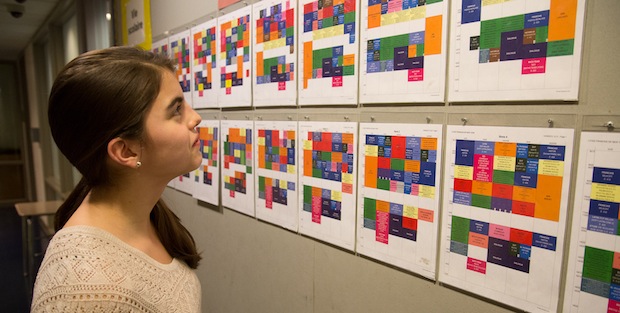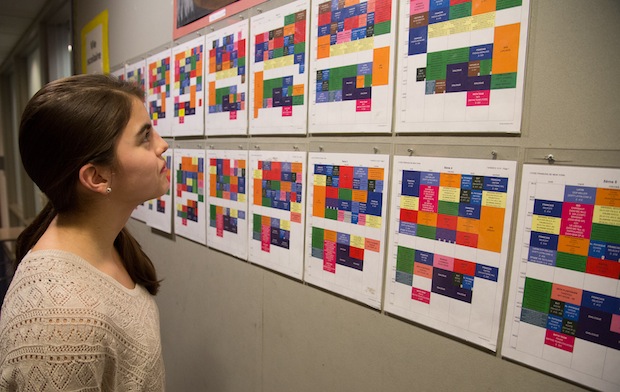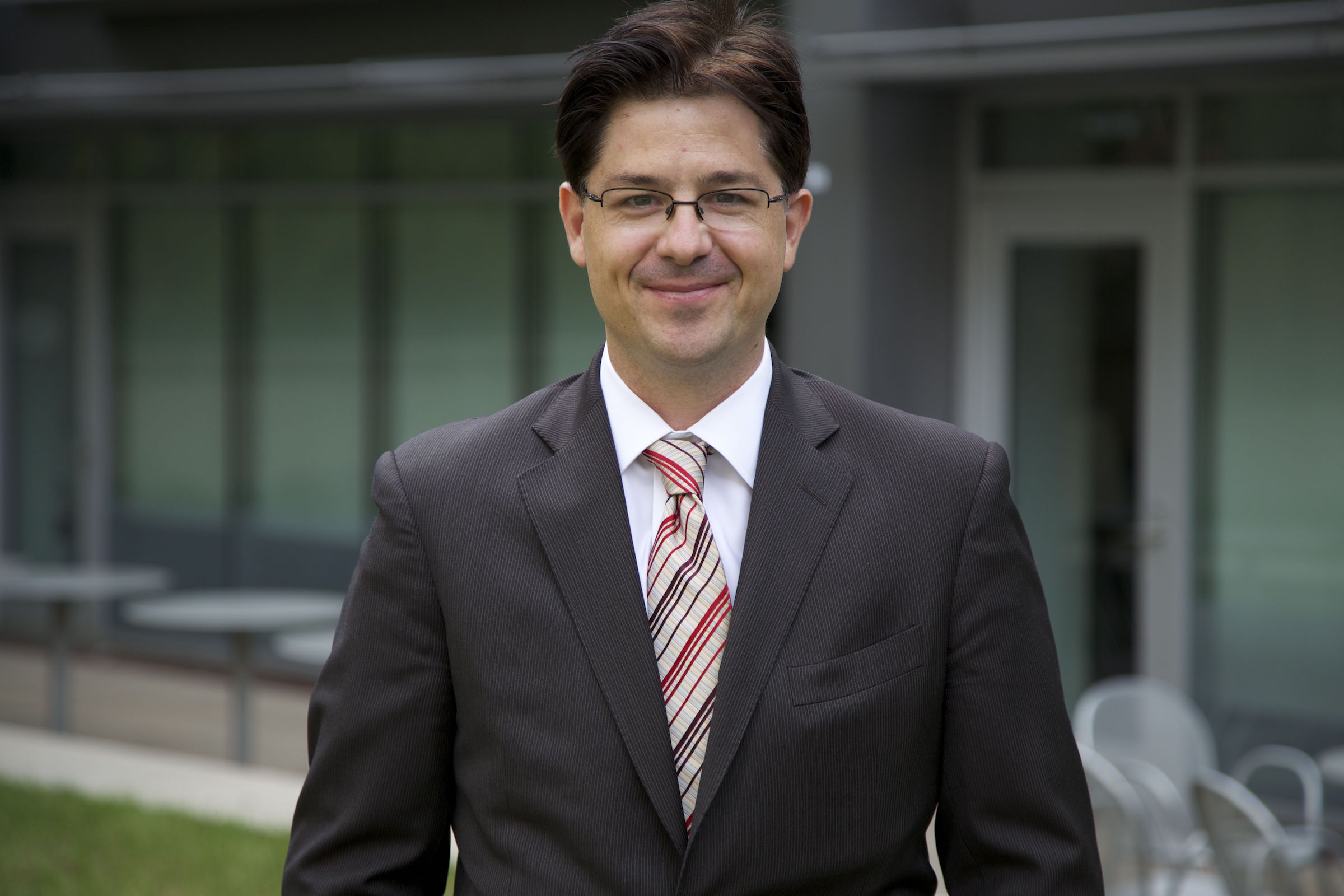A Lycée student looks at class schedules for the Middle School.
Double Identity and Scheduling Challenges at the Lycée Français
The Lycée Français de New York has a dual identity. We are French school in an American city with a program accredited by both the Agence pour l’Enseignement Français à l’Étranger (AEFE) and the New York State Association of Independent Schools (NYSAIS). We prepare students for the baccalaureate exams as well as for AP exams and SATs. This double identity surfaces in many aspects of school life, including in how we organize and schedule time – a critical task for any academic institution.
In Secondary, the work of scheduling classes for the academic year ahead begins in May and ends in September. It is a delicate balancing act with constant adjustments being made right up to the first days of school. First, we organize classes by grade, and then areas of interest. We ask, for example, how many students will take Mandarin in 6th grade? Greek in 9th grade? How many 11th-grade students will follow the Economics, or Science or Literature tracks for the baccalaureate, and then, of these students, which ones will choose the OIB, BFA or the traditional bac options? Even before we get to the work of creating a schedule for each student, we must make sure we understand the answers to such questions.
The answers to these questions are part of an even larger administrative puzzle which includes teacher schedules, class size and structure, space availability in the building, and our academic goals. The questions go on. How big should each class be? How do we offer differentiated learning and instruction in a particular in 11th-grade French class or 9th-grade math class? How do we balance the composition of each class, with the distribution of class time each week, while taking into consideration the natural biorhythms of each of our 645 Secondary students. Indeed, there is a lot at stake.
Over all, the way we structure the schedule is French, but because we have this dual identity, we have an additional layer of scheduling to consider, like making sure classes end in time for students to participate in after-school sports or other cultural activities which are so important to their personal fulfillment. For each student, we have to ask ourselves, do we need to schedule time for SAT prep classes, or to round out the schedule to add in time for additional classes in art, and now this year, the new advisory program.
So, we are a French institution in an American city with a bilingual French program that marries the best of the French and American educational traditions. Indeed, where do we find room to innovate?
And, yet another layer of complexity is building up quickly. The Lycée team sees tremendous opportunity in the revolutionary impact that technology* is having on the classroom, not only in terms of how we teach, but also schedule. Beginning in May, the school will begin work to examine this very topic. We will audit our entire schedule in Secondary, as well as in Primary. We are very open at this stage, and the conclusions have yet to be made. What we do know is that yet another stage of work that goes on continually to analyze and enhance our academic program is about to begin.
We’ll have more to share next year, so stay tuned…
* For further reading on practice and usage of new technology in the classroom, in particular, on e-learning, online learning, and blended learning, please see this study, or review the first pages of Keeping Pace 2012, the annual report of the Evergreen Education Group.
About the Author :
Originally from Alsace, Nicolas L’Hotellier has been the Assistant Head of School at the Lycée since 2009. After obtaining a master’s degree in mathematics and a teaching diploma, he taught for five years in France and then served as Assistant Principal in a collège and a lycée. In 2008, he obtained a master’s in management specializing in the administration of public educational organizations. He likes to foster students’ curiosity and encourages respect for others in all students. Nicolas is married and the father of two boys.



